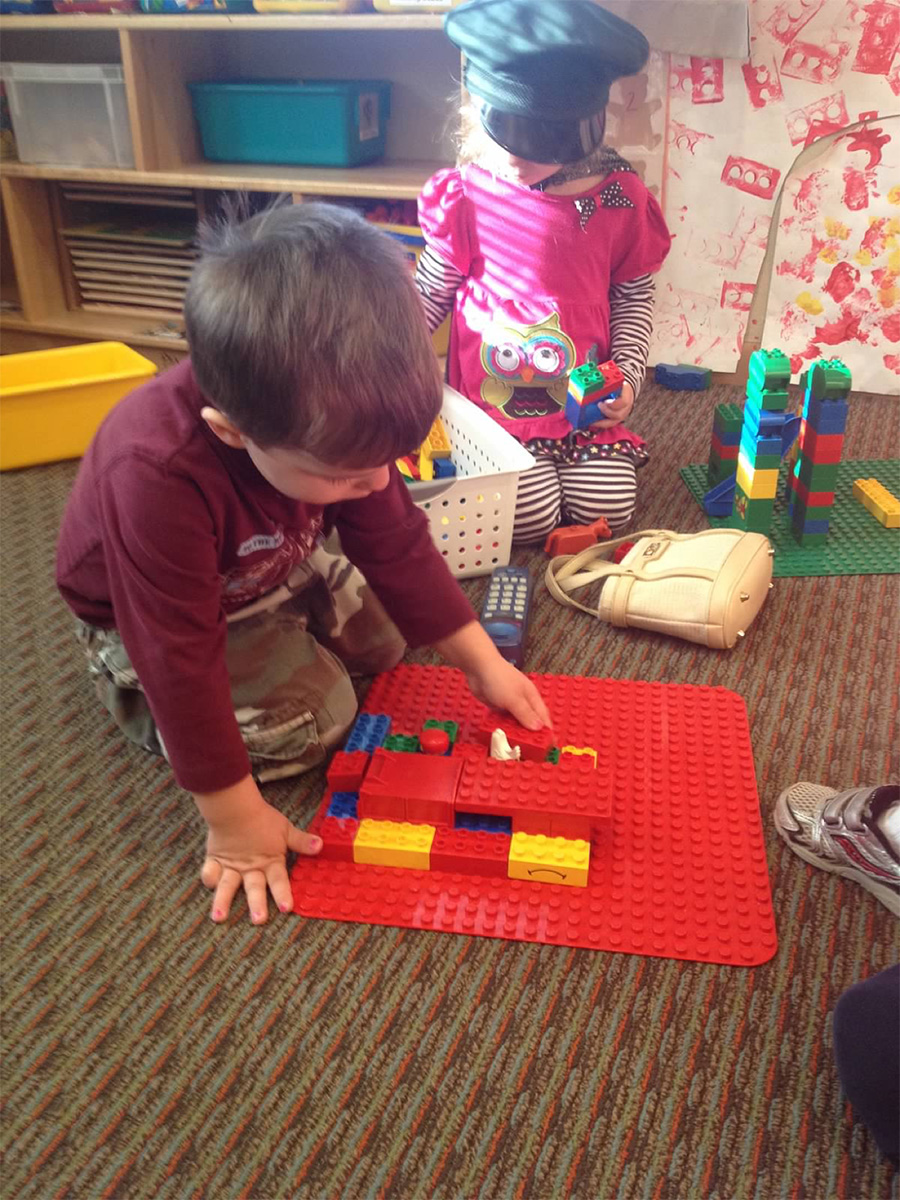
By Jaci Foged, Extension Educator, Lancaster County
I would guess many families with young children have at least one set of blocks in their home. One of my oldest daughter’s first toys was a bag of plain wooden blocks, a gift from her uncle. We would spend lots of time stacking them up and knocking them down! Some of our other favorite blocks include: Fisher Price peek-a-boo blocks, soft activity blocks and the ever-popular Lego Duplos — which are considered an interlocking block or a manipulative. Have you ever considered how important block play is for child development?
WHAT IS A BLOCK?
Merriam-Webster defines a block as a lightweight, usually cubical, and solid wooden or plastic building toy, which is usually provided as a set.
BLOCKS ARE BRAIN BUILDERS
Block play supports and encourages children’s development in multiple areas.
Math: counting, numbers, quantity, measurement (length, height and weight), symmetry, patterns, estimation, addition, subtraction, geometry, size, spatial relations and more!
Science: gravity, weight, balance, cause and effect, designing, perseverance and problem solving, etc.
Language and Literacy: storytelling about what they made or are making, differentiate different shapes and sizes and describing properties.
Physical Skills: large motor and muscle coordination (building uses arms, legs and core), small muscle development with smaller blocks (using fingers and hands), as well as hand-eye coordination.
Self-Regulation and Social Skills: problem solving, persistence, flexibility, cooperation skills, respect for others, sharing, independence and communication skills.
WHICH BLOCKS ARE BEST FOR MY CHILD?
Consider the age and abilities of the child when purchasing or creating homemade blocks.
Infants 0–24 months are at the stage of discovery and stacking. Look for bigger, lighter blocks that are easy to clean. This age of child will put everything in their mouth, and will need something they can easily carry around. Stacking and lining up blocks are actions you will see.
Children 2–3 years of age begin complex stacking. Adults will begin to notice there are both vertical and horizontal stacks created to develop towers.
Children 3–4 years of age start creating foundations of buildings (like the floor plan at the zoo, or a house with rooms). These children will name their project “grandma’s house” or “parking garage.” This age of children also create bridges or arches and 4–5 year old children will begin to create complex buildings, adding in ramps and doors.
Children 5 and older begin to create block structures they will use for pretend play. We know that play is important, however research done by the Gesell Institute in Connecticut has found that pretend play matters a lot in order to be a successful grown up in our world. This type of play provides a safe space for children to practice using the types of mental skills that help them to self-regulate.
HOW CAN I MAKE HOMEMADE BLOCKS?
Put on your detective hat and search for old items you could repurpose into blocks. Milk cartons, old phone books, pudding or jello boxes, tissue boxes, and small or large cardboard shipping boxes. Wrap these items in colored duct tape to create lasting blocks. It can be fun to wrap some blocks in tin foil or colored paper for a different texture and color. Another suggestion to increase the depth of play would be to tape pictures of your child(ren), their friends or pictures of familiar landmarks (state capitol, their school, the zoo, your house or the football stadium).
WHAT CAN I DO TO SUPPORT MY CHILD’S BLOCK PLAY?
Asking open-ended questions is a valuable way to encourage deeper engagement during block play. Asking questions also helps children analyze and evaluate their work. Some possible questions to ask children during block play are:
• How is your building different from your friends?
• Have you decided how to build the bridge?
• What is one way you could keep your tower from falling over?
• Which blocks make the most interesting buildings?
• What part of the castle was the most difficult part to build?
Peer reviewed by Tasha Wulf, Extension Educator, West Central Research and Extension Center.